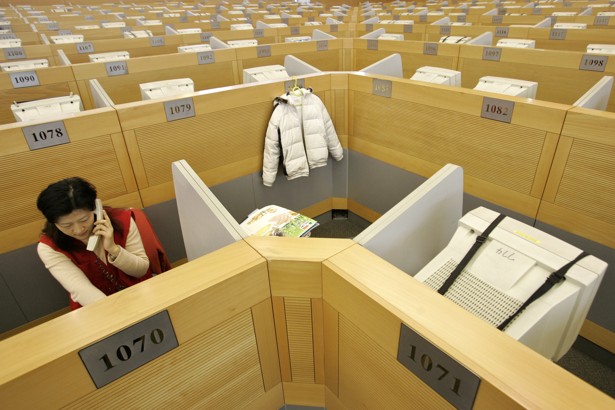
Students display diverse talents at Education Expo
There are countless development programmes for employees, management and leadership at large, which are used as a medium to try and achieve the competitive advantage for organisations. However, strategies and pay systems cannot guarantee hard-work, productivity, loyalty and integrity. Instead companies should focus on hiring the right people, for the right jobs and for the right reasons, beyond money and profitability.
Following guidelines can help organisations create an efficient and production work environment:
1. Identifying and retaining talent – Managers, especially leaders need to know that not all individuals are driven by money or position. Every employee is and can be good but greatness is achieved through opportunity and guidance. If organisations do not nurture critical talent, either it will be wasted or the company would lose out when the skilled individual leaves. As a result, organisations need to invest in the talent by proving growth opportunities through professional development, for which they need to treat Human Resources as a core function and not a standalone or side-lined task.
This startup helps you get a US talent visa and save thousands of dollars
2. Embrace change – Change is crucial for the development of an organisation, yet the mind-set of certain managers, corporate politics and old business practices have destroyed creativity, intelligence and performance. Managers and leaders within the company should manage resistance to change by making use of technology and creating awareness about ways to do business better and continuously strive for excellence. This can bring out the best in each employee as well as the organisation.
3. Gender equality – The effect of ‘glass-ceiling’ is common in our society but organisations need to maintain equality when linking opportunities to position. To ensure that both men and women in the workforce stay on track, businesses need to keep both on equal footing and empower them equally. Further, they need to create awareness so that common perceptions within our society is changed, which in turn would add credibility for the organisation to achieve competitive position.
4. Training and continuous improvement – An organisation’s goals and employee performance are tightly linked when proper systems are in place. The function of training and development is not a one-time thing. Instead, employees should strive to improve their KSAs (knowledge, skills and abilities), while organisations need to provide them with training and targeted learning opportunities to excel at work. It is critical for companies to identify skills and competency gaps using the performance metrics and key performance indicators, and tackle them appropriately.
5. Career and succession planning – There should be a system in place that is linked to the employees’ career path, and shows the organisation is committed to invest in its employees. With proper coaching and mentoring, employees should be able to progress to the next challenge based on their individual skills. For example, if managers and leaders know that an ACCA or an MBA or any certification programme will benefit the individual as it would the organisation, then they should think and plan for the long-term by funding the programme in some capacity. Further, there should be a proper system for succession planning to be able to replace key positions, such as C-Suite Executives, and their respective competencies when the need arises.
6. Performance standards – This is the heart of any organisation where goals meet performance, but problem lies in conducting such appraisals in a timely manner. Meetings should be conducted periodically to evaluate and review the goals on a quarterly or semi-annually basis. In fact, since performance systems improve team performance, managers need to be well-trained in order to conduct such appraisals. Modern organisations use Electronic Performance Monitoring to observe on-going performance of employees while others use a variety of common performance measurement methods. If a Learning Management System is in place then the process becomes much easier as the system enables the management and employees to holistically assess both individual and business goals.
Drizzling chocolate and truffle butter: Home-based venture by cake queens takes city by storm
7. Reward performance – A time-tested approach is to recognise and reward performance. Organisations need to know which team members are hungry and actually performing, and be able to separate them from those who slack off, without any biases. It is important to reward team members accordingly to keep high workplace morale and show organisational commitment. This does not necessarily mean enlargement of responsibilities but rather salary increments, or simple perks such as a free buffet voucher for the family, or even half-or-full day off with pay. However, the implementation of rewards policy must be sincere and an on-going programme which is tactfully linked to important projects and assignments.
Talent development is more than business meetings and flowcharts to manage performance. It incorporates everything from recruiting, retaining, developing and rewarding employees. Some key benefits of talent development include a happier workforce, improved performance, higher financial outcome and a better culture that creates business value. Every organisation wants to be the “Employer of the Year” but the fact is that employees are the reason why organisations become the employer of choice, which is why good employees need to be put on a development plan that involves learning to become indispensable.
Moez Allidina is an OD Trainer at Maktab Learning Solutions, and works as Lecturer in Management.































1714024018-0/ModiLara-(1)1714024018-0-270x192.webp)









COMMENTS
Comments are moderated and generally will be posted if they are on-topic and not abusive.
For more information, please see our Comments FAQ